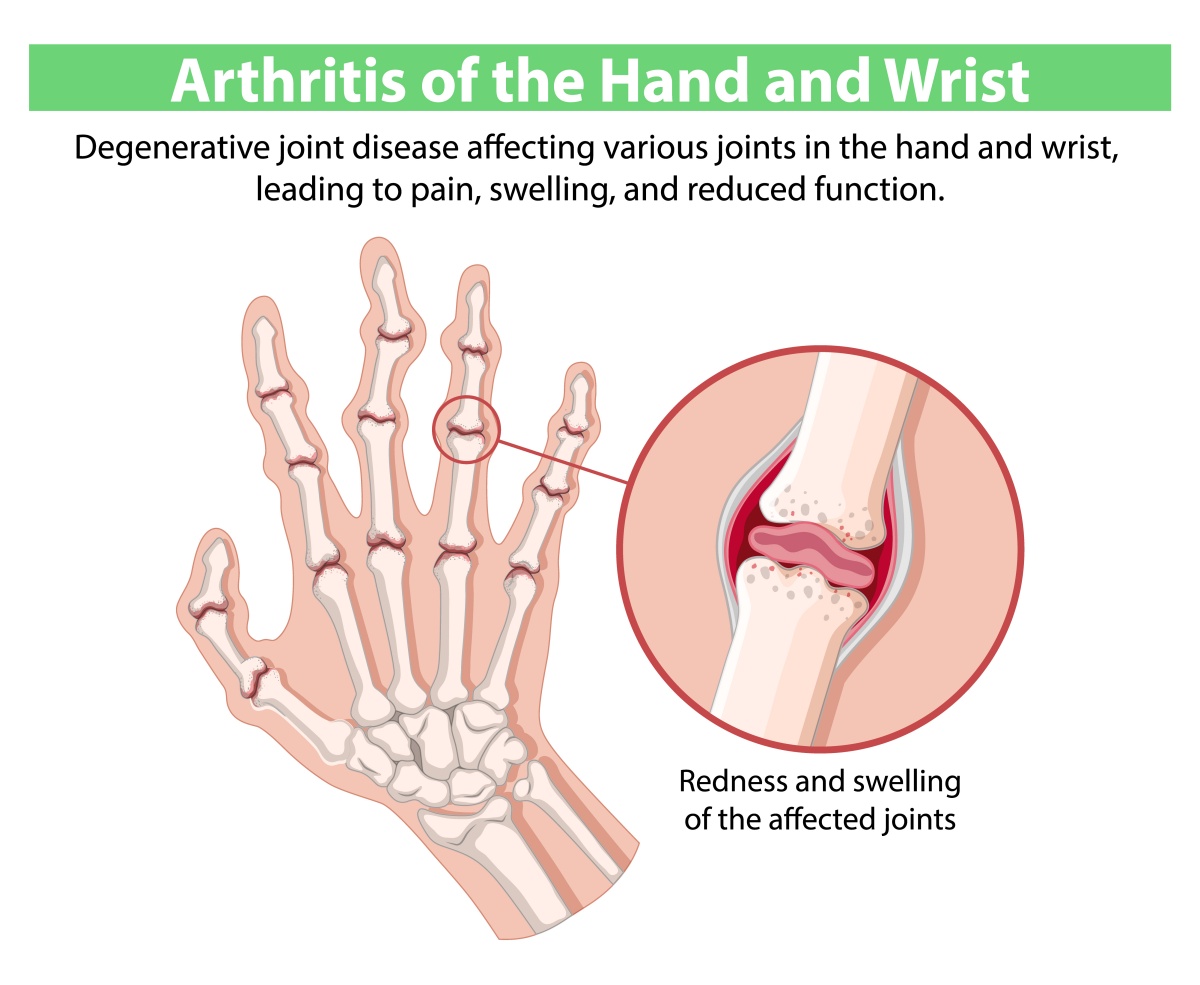Unlike osteoarthritis, which results from wear and tear, rheumatoid arthritis (RA) is an autoimmune condition where the body’s immune system mistakenly attacks its own joints. The result is inflammation, pain, and eventual damage to bones and cartilage.
“The exact cause of RA is unclear, but genetic, environmental, and immune system factors contribute to RA development,” says Dr. Shailaja Sabnis, Consultant Rheumatologist at Lilavati Hospital in Mumbai. “Genetics plays a significant role as genes such as HLA-DR4 raise the chances of RA.” While this suggests a hereditary link, not everyone with a family history of RA will develop it. Environmental triggers (such as smoking, infections, or hormonal imbalances) can also play a role in its onset.

Early signs of RA include joint stiffness, especially in the morning, swelling, fatigue, and pain in small joints like fingers and wrists. Yet, these symptoms are often mistaken for simple aches, delaying diagnosis and treatment.
Cracking Knuckles And Arthritis, Is There A Connection?
The sound may be annoying, but having a habit of cracking knuckles is far from dangerous. We asked Dr. Sabnis to clear the doubt for our readers. “There is no concrete evidence available that says knuckle cracking causes any type of arthritis,” she told the ETV Bharat Health Team.
“Knuckle cracking produces a harmless release of gas to create the ‘pop’ sound. The cause behind arthritis is the tissue inflammation in joints rather than any structural damage or due to cracking.”
In other words, if you enjoy cracking your knuckles, you can carry on without fear. The real culprits behind RA lie in immune dysfunction, not harmless habits.
Arthritis Can Happen At Any Age
Most people assume that arthritis is an affliction of old age, something that creeps in with the passing decades like greying hair or fading eyesight. But what if arthritis (specifically RA) is not as tied to ageing as we think? What if it can appear decades earlier, even in children?
Says Dr. Sabnis, “It is assumed that rheumatoid arthritis is a part of the normal ageing process. However, this is not true because RA can affect people belonging to any age group. It is seen in people aged 40-60. In some cases, it is even seen in children and teens too. It is not an elderly person’s disease anymore.”
Does Daily Exercise Affect Your Joints?
It seems counterintuitive. If your joints hurt, why move them more? Yet, movement is precisely what many RA patients need.
“Daily exercises such as walking, swimming, and cycling can improve strength and overall range of motion,” Dr. Sabnis clarifies. “However, don’t go overboard and exercise under the guidance of a fitness trainer only after the doctor’s advice. Don’t do any rigorous exercises that induce joint pain, inflammation, and swelling.”
The key is moderation. Low-impact exercises keep the joints flexible and reduce stiffness. Strength training helps maintain muscle support around joints, preventing further deterioration. In contrast, a sedentary lifestyle can worsen symptoms over time.
Rheumatoid Arthritis Can Affect Organs Too
While joint pain and inflammation are the most visible signs of RA, the disease can also impact other parts of the body, including the lungs, heart, and eyes. RA is an autoimmune disorder, meaning the immune system mistakenly attacks healthy tissues, causing widespread effects beyond just the joints.
How To Reduce The Symptoms
Since RA is a chronic condition, management is about reducing symptoms and preventing long-term damage. The right combination of medication, lifestyle changes, and physical therapy can help individuals lead full, active lives. Anti-inflammatory diets rich in omega-3 fatty acids, whole grains, and leafy greens have also shown promise in reducing RA symptoms.
Most importantly, early diagnosis is crucial. The longer RA is left unchecked, the greater the damage to joints and surrounding tissues. If symptoms persist (especially joint pain that doesn’t go away with rest), it’s worth consulting a doctor.
Read more:



